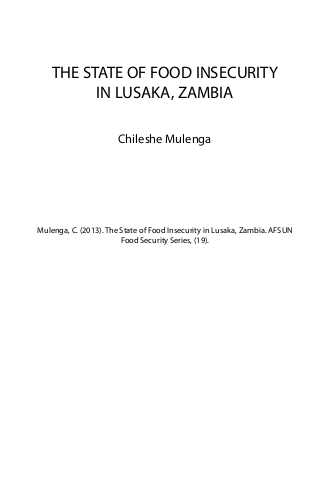Urban Food Security Series | #19

The definition of food security adopted in this report emphasizes the dietary and nutritional aspects of food utilization. In this respect, it builds upon other recent studies of food consumption in Zambia. For example, the Urban Consumption Survey found that wheat had overtaken maize as the most important staple among urban consumers (except among the urban poor) and that urban diets were becoming more diverse. Overall, the survey found that cereals and staples make up 25% of food expendi- tures, followed by livestock products (21%), fruit and vegetables (18%), and fish and sugar and oils (both 8%).25 This suggests a relatively diverse diet, although consumption of livestock products, in particular, increased with increased income. This report provides additional insights into the nature and quality of the food security of poor urban households in the informal settlements of Lusaka through the analysis and discussion of the findings of the AFSUN baseline survey of 2008-9.
Links
Resource collections
- UN Habitat - Urban Response Collection
- Urban Response - Urban Crisis Preparedness and Risk Reduction
- Urban Response Collection - Community Engagement and Social Cohesion
- Urban Response Collection - Economic Recovery
- Urban Response Collection - Environment and Climate Change
- Urban Response Collection - Housing, Land and Property
- Urban Response Collection - Urban Crisis Response, Recovery and Reconstruction
- Urban Response Collection - Urban Resilience